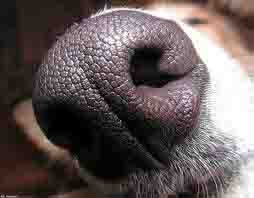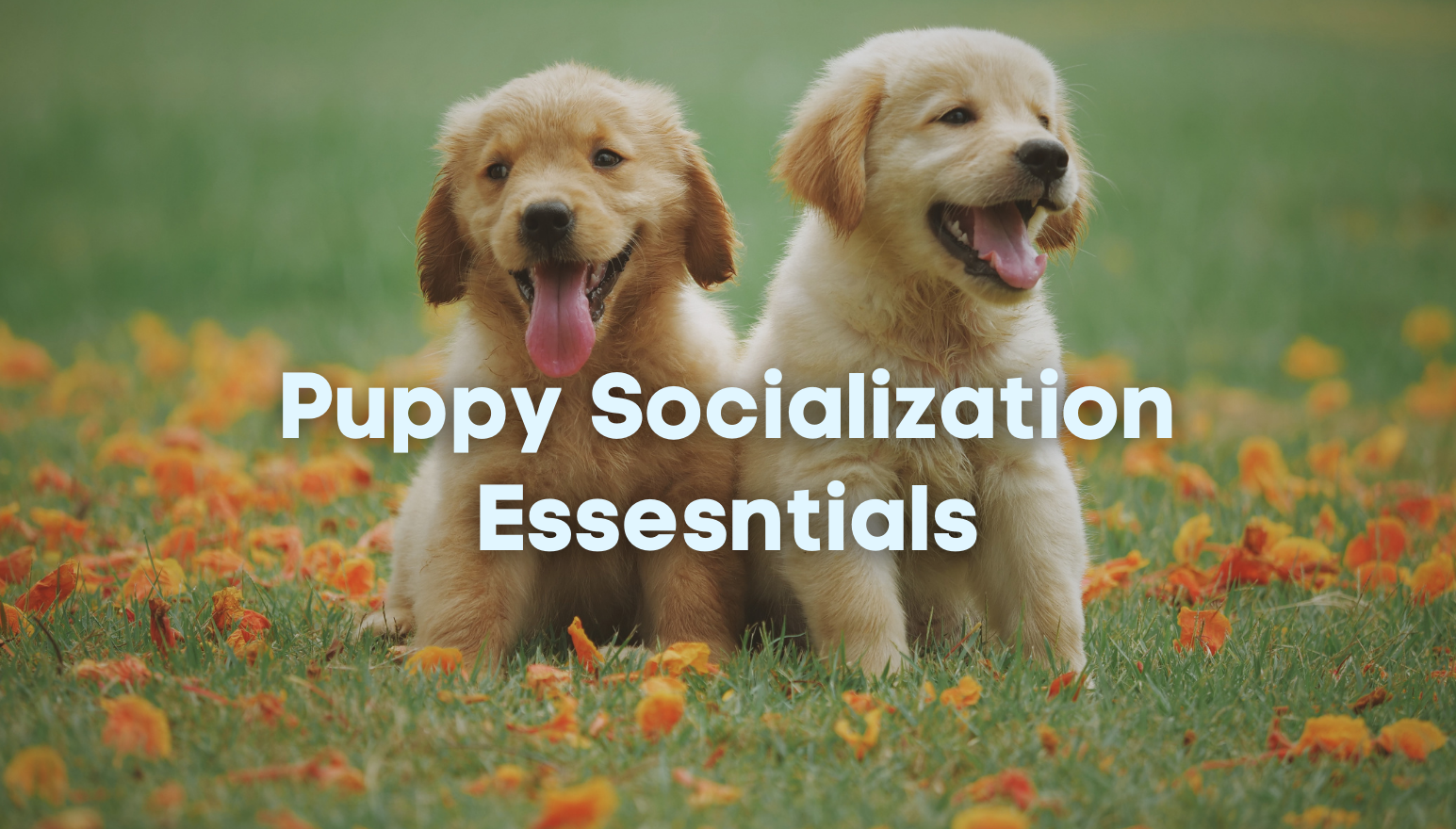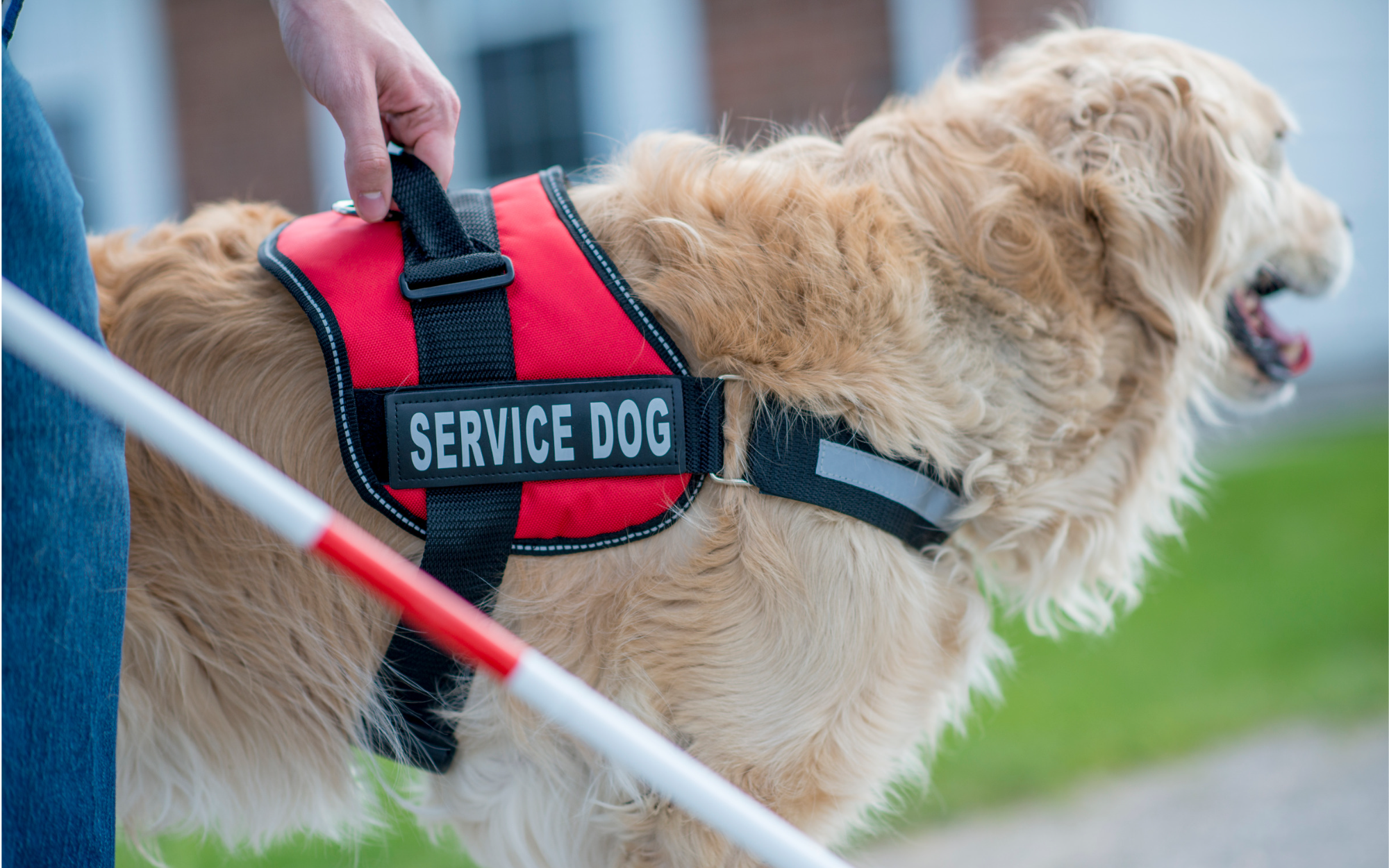
The ABCs of Tracking and Other Games
By Brenna Fender
American Kennel Club (AKC) is probably the most well-known organization in the United States to sanction tracking. You can read the AKC tracking regulations and get other info at https://www.akc.org/dog_shows_trials/tracking/.
Beginning tracking dogs learn on short, straight tracks with their handlers close by.
Cross-tracks are found in some tracking tests (the AKC TDX test is one). A cross-track occurs when someone other than the tracklayer walks across the track. In an AKC TDX test, cross-tracks are made by two people who walk side-by-side about four feet apart at a 90 degree angle to the track. Cross-tracks add an additional challenge for tracking dogs. There are many specific instructions on how a cross-track should be laid, and those details can be found in the AKC tracking regulations, Chapter 4, Section 4.
Dogs of any breed can enjoy tracking. Although hounds are well known for their tracking prowess, even toy breeds like Papillons have proven themselves to be talented trackers! Some organizations, like the American Mixed Breed Obedience Registration (AMBOR), allow mixed breeds to title in tracking.
Equipment needed for tracking includes a non-restrictive harness, long tracking leash, flags, gloves, and other articles. You will also need a large, grassy area free of obstacles. Other items may be used in training, like treats or toys.
Flags are placed when a track is mapped in order to tell the tracklayer where to walk. In an AKC Tracking dog test, all but the first two flags are removed before the dog begins to track. In Tracking Dog Excellent tests, only the first flag and flags indicating cross tracks remain, and in Variable Surface Tracking tests, only the start flags remain. Flags help orient the handler and give him or her a visual clue about wind direction and strength.
Gloves are frequently used as the articles found at the end of an AKC Tracking Dog test track. Wallets are also allowed.
Handlers must stay 20 feet behind their dogs in AKC tracking tests, except in Variable Surface Tracking tests, in which the required distance is 10 feet. Leashes used for tracking should be 20-40 feet long.
Items dropped along a track by the tracklayer are called “articles.” These smell like the tracklayer and are deliberately placed for dogs to indicate as part of a tracking competition.
Just straight lines? No way! Tracking tests incorporate a minimum of three turns, which can be tricky for dogs to follow.
Know the rules before you enter. Different sanctioning organizations may use slightly different rules, so be sure you know exactly what you are supposed to be doing at any competition.
Levels of difficulty and titling in AKC tracking include Tracking Dog (TD), Tracking Dog Excellent (TDX), and Variable Surface Tracking (VST). Dogs that have earned a TD may go on to the TDX or VST levels next. Dogs that earn all three titles become Champion Trackers and earn the letters CT before their AKC registered name. There are more tracking titles being added as the sport continues to develop.
Maintain your own fitness (and your dog’s) because tracking is an outdoor sport performed over varied terrain over long distances. An AKC Tracking Dog test is a minimum of 440 yards long, and the TDX and VST tests are longer, up to 1000 yards for the TDX.
Novice tracking dogs (with no previous tracking titles with the AKC) must obtain a certification before entering an AKC test. According to the AKC tracking regulations, “A written statement must accompany each entry for a licensed or member tracking test for any dog that has not previously passed an AKC TD test.” This letter must be signed by a person approved to judge tracking tests, and it must certify that the dog has successfully completed a certification test, which should be equivalent in complexity and conditions to a TD test. Other tracking organizations may also require certification.
Other organizations in the United States that sanction tracking include the Australian Shepherd Club of America (asca.org/programs/tracking), the America Mixed Breed Obedience Registration (ambor.us), and Schutzhund clubs like the United Schutzhund Clubs of America for the German Shepherd Dog (germanshepherddog.com).
Praise and petting are allowed in an AKC tracking test when a dog finds the articles on a track. Competitors can’t use the articles to play with their dogs, though.
Quenching a dog’s thirst while tracking is fine in an AKC tracking test, but use of anything other than water or ice is prohibited. Be sure to bring water when you are training for tracking since you don’t want your dog to overheat, or have his ability to scent the track diminished because of a dry nose and mouth.
Reinforcement in the form of small treats is often left along the track during the early stages of training. In fact, some training techniques involve placing food in every footstep! Other training methods leave treats in various spots, called food drops.
Speed is not necessary for tracking. There is no maximum test time in AKC tracking tests. But if a dog is not working, he may fail the test, so don’t expect unlimited time for a dog that is fooling around.
The sport of tracking involves a dog following a human scent over a track laid previously by a person (the “tracklayer”) who walks in a pattern designed by a judge. Tracking is not the same as man trailing or search and rescue, where dogs are encouraged to scent both ground and air to find a human who is missing, hiding, injured, or deceased.
Unfortunately, scavengers and insects can be attracted to treats left in food drops. Be very careful using food on the track in places where fire ants may infest your treats. A tracking dog that gets a mouthful of ants may be put off of the sport for a long time.
Variable Surface Tracking tests are different than TD and TDX tests, which generally take place in open fields. VST tests show a dog’s ability to work on a “non-vegetated surface.” According to the AKC tracking regulations, “The track will have a minimum of three (3) different surfaces, which will include vegetation and two (2) areas devoid of vegetation, such as concrete, asphalt, gravel, sand, hard pan, or mulch. The areas devoid of vegetation will comprise at least one-third (1/3) but not more than two-thirds (2/3) of the total length of the track.”
Wind plays an important role in tracking. The scent will drift off the track so dogs may track downwind. When training, it can be useful to know where the wind is blowing the scent so that you can be aware when your dog appears to be off track, but may be following the scent after all.
X is added to the letters TD when an AKC competitor earns the Tracking Dog Excellent title. The TDX test is longer, with more turns, and four different articles to be found on the track. It also has cross-tracks and various obstacles like roads, ditches, and woods.
You want to try tracking? To find an AKC training club in your area, go to the AKC website’s club search (akc.org/clubs/search/index.cfm), but be aware that not all of these clubs offer tracking classes or training sessions. To find an ASCA-affiliated club in your area, visit asca.org/ascainformation/affiliateclubs. For Schutzhund, one option is to visit dvgamerica.com and click on “Clubs and Officers by State.”
Zebras on the track? No problem! The appearance of animals or vehicles in the tracking area or crossing a track is considered to be part of the testing environment and the dog will continue to work the track.
Tracking has practical applications for those who want to help others you could learn how to teach your dog to track lost animals, and of course search and rescue focusing on finding people is also a form of tracking.
A fun version of teaching your dog to find something is Fun Scent Games which centers around your dog finding treats which are hidden in harder and harder to find places. This game starts with boxes but builds up to a dog searching an entire room or area. Most dogs learn this game very quickly and it can be a great way for with issues to learn to focus and to tune out the environment. Come join the fun and sign up for a Fun Scent Games class group or private instruction today by visiting www.CourteousCanine.com.
A version of this article first appeared in DogSport Magazine and is shared with permission.
Courteous Canine, Inc. offers dog training, puppy training, working with aggressive dogs and rehabilitating fearful and shy dogs. In addition we offer cat training, agility, pushball, Fun Scent Games and dock jumping. Courteous Canine, Inc. is a full service dog school that offers doggie day care, pet sitting, group classes and boarding!




